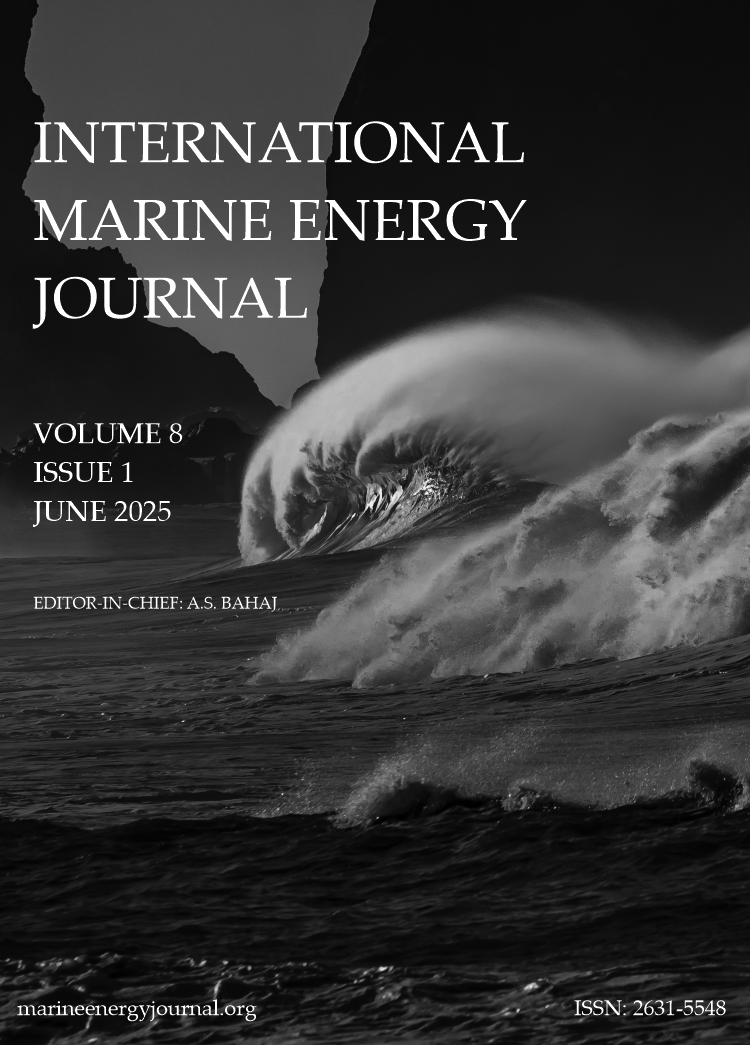Effects of non-isotropic blockage on a tidal turbine modeled with the Actuator-Line method
DOI:
https://doi.org/10.36688/imej.8.109-117Keywords:
Tidal Energy, Anisotropic Blockage, Actuator line method, CFDAbstract
This paper presents a study on the effects of non-isotropic blockage on a tidal turbine using numerical simulations. A tidal rotor was modeled with OpenFOAM using the Actuator-Line method under four different blockage ratios, four different aspect ratios, and four different tip-speed ratios. The study analyzes the blade-boundary interactions through observations on the rotor integrated loads and power, sectional forces, local angles of attack, and turbine wake characteristics. The simulations reveal that, while reducing aspect ratios (i.e., bringing the boundaries closer to the rotor) has a negative impact on performance at low blockage, increasing blockage reduces the influence of aspect ratio on time-averaged thrust and power. However, the changes in aspect ratio can result in significant thrust and power fluctuations in time, especially at blade sections close to the tip. On a local scale, the impact of aspect ratio is observed on angles of attack changes due to flow acceleration, especially close to the blade tip. The effects of blockage and aspect ratio can also be observed in the development of the turbine wake. The presence of boundaries limits the expansion of thee wake and its interaction with the surrounding velocity field, affecting wake recovery
Downloads
Published
How to Cite
Issue
Section
License
Copyright (c) 2025 Enzo Mascrier, Federico Zilic de Arcos, Grégory Pinon

This work is licensed under a Creative Commons Attribution 4.0 International License.
I the author/we the authors understand that I/we retain copyright over our article. I/we grant a licence to IMEJ to: publish my/our article under the terms of the Creative Commons Attribution (CC BY) License which permits use, distribution and reproduction in any medium, provided the original work is properly cited, and identify IMEJ as the original publisher.


